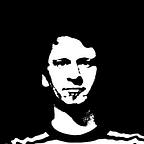Some things I learned about data-driven storytelling in Schloss Dagstuhl
I am just home after an intense week of discussions, brainstorming, writing, interviews and ping pong in Dagstuhl, a German castle hosting weekly workshops on topics related to computer science. Ours was on data-driven storytelling.
Trick question: What do social media, business, dance, marketing, design, photography, life, film, hollywood, branding, journalism, speaking, travel, leadership, pr, folk, advertising, instagram, fundraising, country music, pitching, employer branding, and marketing your skills for a job have in common?
Well, they are all about storytelling, according to the first 5 pages of results for the respective Google search.
Is any form of communication that is sufficiently interesting and engaging automatically a “story”? It’s a slippy word, defying definition like a wet piece of soap, and overly ripe with associations and assumptions.
So, as you can guess by now, I am not a huge fan of the “S” word, but I have to say the workshop gave me a new appreciation for the emerging practices of
- weaving data presentations into traditional storytelling formats, and
- bringing rhetorics, dramaturgy, suspense, … to data visualization.
I learned that much of data storytelling can actually be understood much better when thinking about formats like speeches, presentations, jokes, documentary film, rather than “tales” or “plots”.
Telling a story does not automatically imply a simplistic, author-driven, linear, primarily entertaining narration.
Really interesting stuff can happen when we inject mechanisms from these other — persuasive or entertaining — forms of communication of information. Look at the beautiful use of repetition and rhetorical questions in this lovely Bloomberg piece:
In its widest form, storytelling is about establishing a flow of data perspectives. Defining and redefining data perspective can become a storytelling mechanism in itself, like in this blog post on biking accidents.
Interesting things can also happen when user participation becomes part of the story told: If you need to fix the budget yourself, guess a correlation curve or speed-trade stocks — putting the user right in the middle of the narrative can be a powerful mechanism:
Projects like netwars take these ideas even further, and start to blend documentary movie, graphic novels with data visualization and multi-platform experiences, weaving an atmospheric net around a topic.
So, what did we discuss, and what is still open? Well, everything, basically.
The field is widely uncharted, and there is still a lot of room to explore, debate, categorize, understand, and improve.
Our sub-group started to create a collection of narrative patterns: implementation independent mechanisms you can use to carry the story forward, raise curiosity, help people understand, and empathize. We are excited about this idea, as it could inspire people who know what story to tell, but not necessarily how to come up with fresh ideas on how to make their data presentations more interesting, memorable and emotional.
So — watch this space! :)
Thanks to Schloss Dagstuhl for being what it is, and to the workshop organizers Sheelagh Carpendale, Nicholas Diakopoulos, Nathalie Henry Riche, Christophe Hurter and my workshop group consisting of Benjamin Bach, Lyn Bartram, Jeremy Boy, Paolo Ciuccarelli, Steven M. Drucker, Yuri Engelhardt, Ulrike Köppen, Barbara Tversky, Jo Wood and all the other participants. It was great bouncing ideas with you all.
